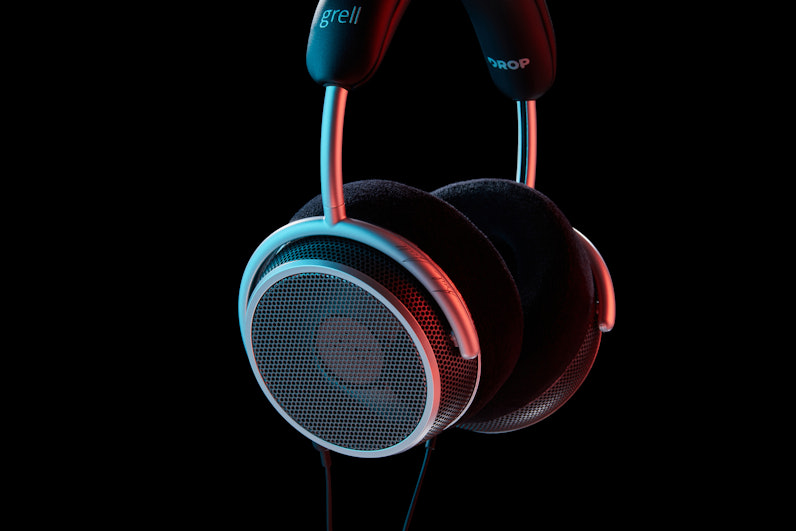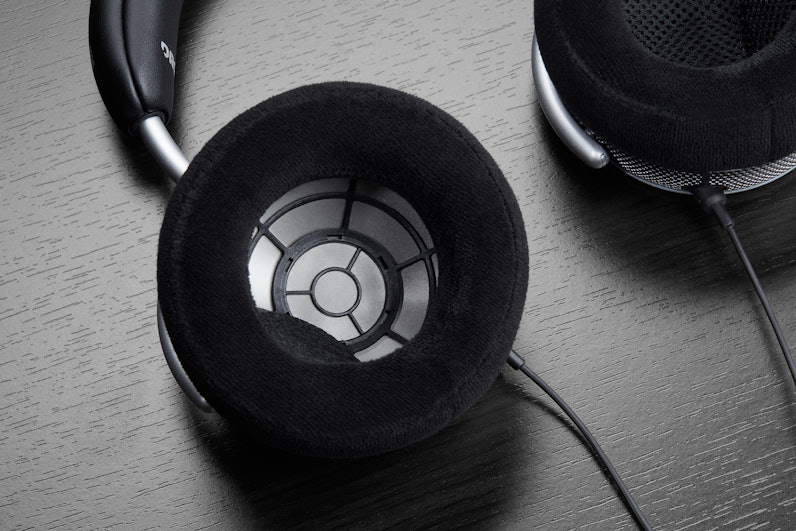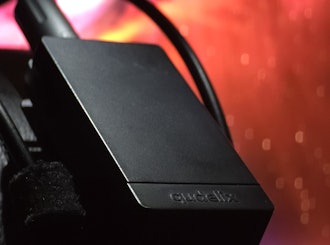Click to view our Accessibility Statement or contact us with accessibility-related questions














The Most Open Open-Back?
To minimize unwanted artifacts in the listening experience, it was important that the OAE1 signature headphones avoid reflecting any secondary sound waves back toward the ear. Much like sound waves bouncing off walls when speakers are played in an empty room, the echoes from the reflections off the headphone body can cause interference, leading to dips—and even worse, peaks—degrading the quality of sound and imaging.







search
close
Sort by: Newest
keyboard_arrow_downDannyif
43
Keyboard Club Member
Apr 28, 2024
Does anyone know what the price range is for these headphones. Why would I request without a price range at the very least?
tutetibiimperes
266
Apr 9, 2024
I wonder what the impedance will be. Hopefully pretty high like most Sennheiser models, make it a good fit for the new Drop OTL tube amp.

Nutless
0
Apr 10, 2024
tutetibiimperesimpedance has nothing to do with sound quality. If you want the effect of a tube amp, you can just use parametric equalization, and achieve far better results, at that.

radpoodle
246
Keyboard Club Member
Apr 12, 2024
Nutlessthats not necessarily true. higher impedance generally means there is more room for louder listening while keeping a cleaner, undistorted sound. turning the volume up too high on lower impedance will distort more than on higher impedance. so at normal listening it may not matter as much but it can depending on what youre using the headphone/speaker for and at what volume. and the equipment you have plays a part of course. like most things its all about finding a balance between what fits the most customers without disappointing the ones outside of that middle ground. finding the top of the bell curve basically. unless youre going for being the very high end of course. where you can assume people have better gear, more powerful amps, better dacs that can take advantage of the higher imp more than the people who plug the headphones into their xbox controller or $200 chromebook.
i think. not an engineer or anything.... just an idiot who has spent too much on audio equipment over the years.
(Edited)

PiedPiper
7
Apr 9, 2024
Pleases release CSD diagrams at release so we can see how much resonance was subdued.
ConnorBig
133
Apr 8, 2024
Hopefully they take time an do some retuning and refining. A lot of people disliked it a lot at the recent cam jam.

Evshrug
3776
Community
Apr 27, 2024
PiedPiperHonestly, I've been training at my new job as an eyeglasses lens technician for the past two weeks; I've not had time to do careful, structured A/B comparisons yet (I have off today, but I'm trying to build a piece of furniture, lol). From memory owning an HD 800 for 9 years, the HD 800 will still make micro details more apparent, especially highlighted by the stronger treble presence, but the OAE1 is no slouch and I can still distinguish multiple instruments and easily hear the improvement of going from AAC 256 kbps to Apple Music HiRes. Can I hear Paul McCartney play a wrong chord in "Hey Jude" at 2m:55s, and then make an exclamation in the background? Yes. The OAE1 is not an analytical headphone by nature, but it seems to take EQ well and increasing the treble would make harmonics more emphasized, potentially highlighting details in the fundamental midrange notes.
Trending Posts in Audiophile

harrykane01
World Of Shanik
The World of Shanik, known for its fusion of culinary excellence and elegant design, now offers a diverse range of products to enhance your lifestyle. From the exquisite turntable cheese board, perfect for entertaining guests with style, to the nightstand organizer wood, keeping your essentials neatly arranged, to the custom tequila shot glasses that add a personal touch to any gathering, Shanik continues to innovate in both form and function. Since its inception as a celebration of good food, good people, and sophisticated design, Shanik has evolved into a trusted destination for those who appreciate quality craftsmanship and tasteful living.
Apr 25, 2024

robbertwilson
Shop Premium Women Golf Shirts at ApparelnBags
Be the trendsetter on the golf course with our stylish collection of custom polo shirts for women. Whether you're swinging your way to victory or simply want to rock that sporty chic look, our polo shirts for women are here to make you stand out. Moreover, we understand that style and quality go hand in hand. That's why, from golf shirts for women to long sleeve polo shirts for women , we handpick the best products to ensure you experience comfort and durability. Also, our women polo shirts offer the perfect blend of style and functionality, so you can focus on your game without compromising style. So, grab your favorite polos today. Remember, it's not just a game; it's a lifestyle, and our polos will help you ace both!
Apr 25, 2024

SsButerbal
Ringing in PC38X's
I recently got this headset, and wow is it good. My only issue is when certain people talk on discord, I can hear a really high pitched ringing. I fiddled with a bunch of settings, computer audio and discord, and nothing seems to solve the issue. It is primarily if not all in my right ear only. Is there something wrong with my headset, or was that ringing always there I can just hear it cause the headset is THAT good? I haven't had any issues with any other application, though I have yet to test if I can hear the ringing on a different version of discord, say on my xbox instead of my pc. Only other issue I've had is occasional static, but I can't tell if it's from the headset or the show/game/etc.
Apr 24, 2024
itsamepe
Sennheiser PC37X randomly goes bad after disconnecting the cable ?
Greetings, Yesterday I was using my headset like normal with my macbook, just listening to music and on a call with people like usual, and the headset was perfectly fine. The stock wire that came with the headset is extremely long and yesterday it annoyed me very much that it kept getting tangled with itself, so I decided to see if the cable is replaceable. I pulled out the cable from the headset and saw the adapter, and looked online for a replacement. Upon plugging it back in, the audio sounded extremely muffled and washed out. Im not sure what I did wrong to make it mess up like that as I've always taken good care of it, ive had it for about 2 years and its always just been chilling on my desk, but anywho I thought the cable just went bad and ordered a replacement. The replacement came, and the issue is still persistant, so I am not sure what the issue is I've tried multiple different headsets and the issue is not with the port, and I also tried it with my windows laptop and...
Apr 23, 2024

MrChiSox
Big changes coming to my tiny little music room, I've recently purchased a new stack. Currently figuring out where to locate it all and ordering up the necessary cables, it won't be too long before I'm up and running. I am now the proud owner of a brand new stack. It's a European brand called Earmen. Amp, DAC, Streamer & Linear Power Supply. It won't be long!
https://www.youtube.com/watch?v=MB15yM4UptQ
Apr 23, 2024

Briankan
Recommendation for my next headphone set? I have Koss 95x
Hey all, What would you recommend I get next and why? I have Koss ESP-95x electrostatic massdrop headphones. These are my first and only audiophile set. I love them. I think my only real requirements is $500 or less for the headphones and that they have a little more low end. I don’t need thump but these are really light on lows…but the experience is still awesome. Also any recommendations on an amp? I only have my electrostatic thingy. I am using the Topping D50 DAC. thx!!
Apr 22, 2024

Simthaniel
Rigs
Modded headphones with qudelix at the core
When I received the Qudelix 5K, I had already modified a pair of Superlux HD-681 headphones. I previously soldered my own balanced connections to the drivers, providing multiple ways to connect and...
Apr 14, 2024


